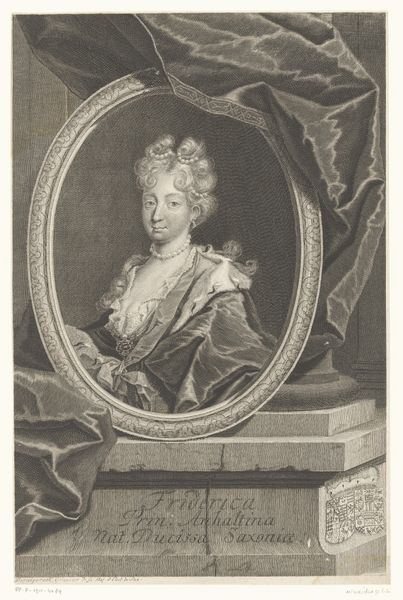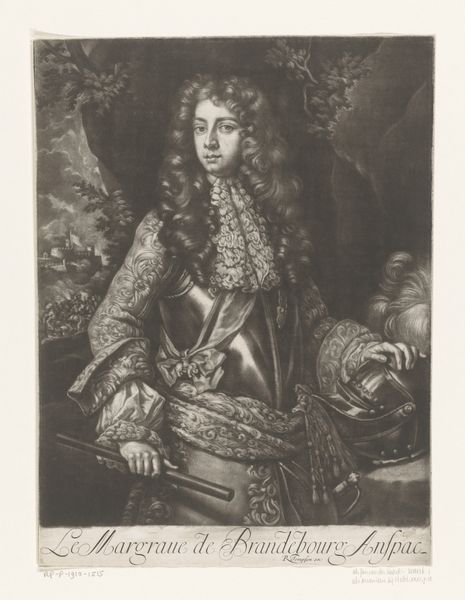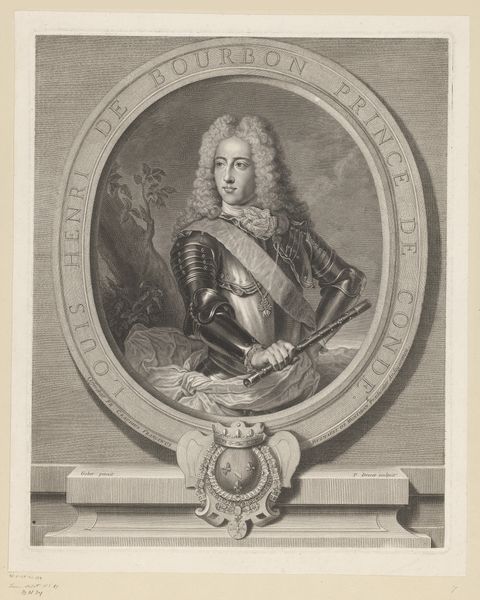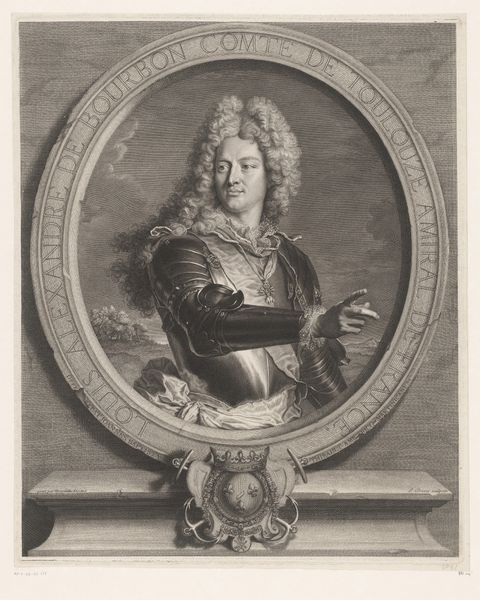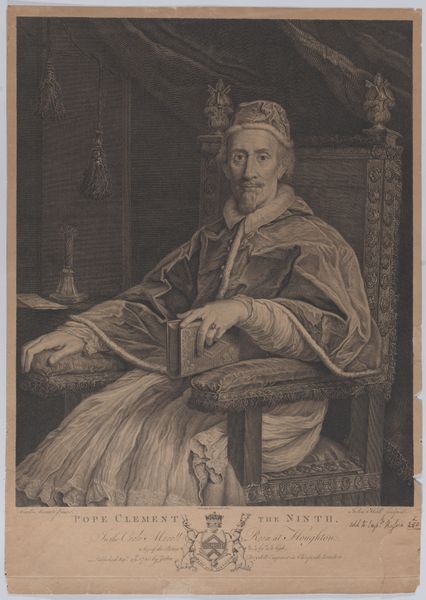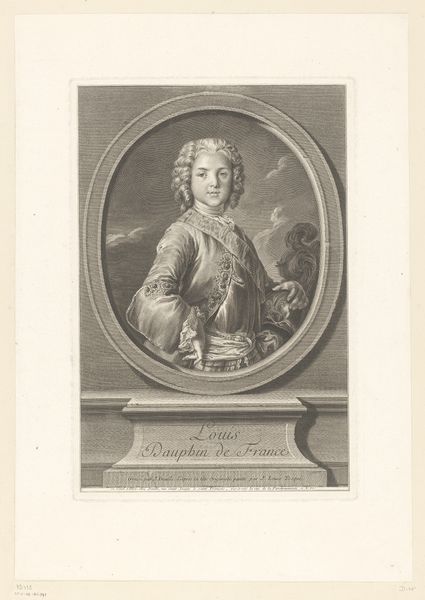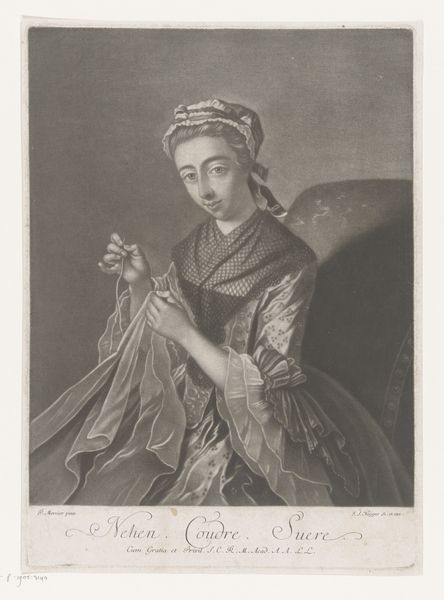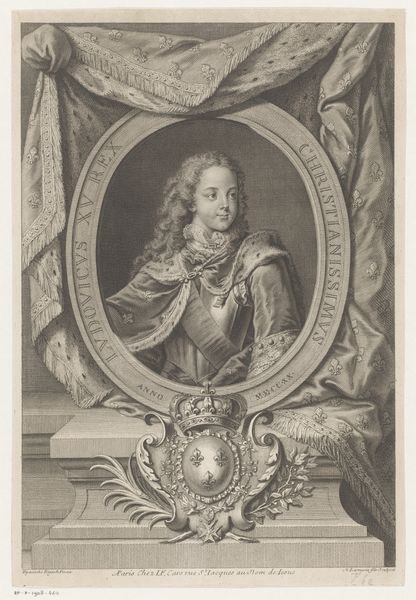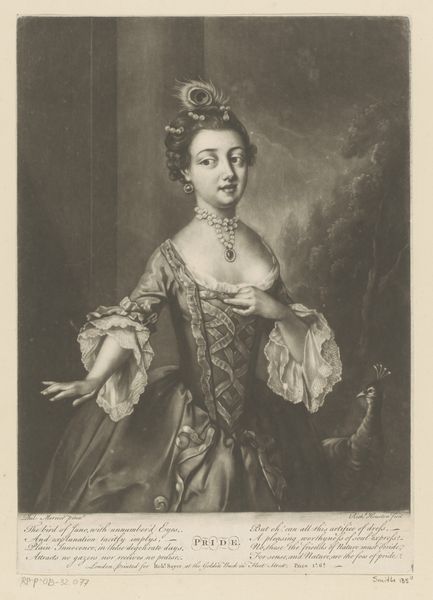
Dimensions: height 356 mm, width 252 mm
Copyright: Rijks Museum: Open Domain
Richard Houston's "Verkwistende jongen met hond," or "Prodigal Son with Dog" created in the mid-18th century, is a mezzotint whose arrangement of light and shadow immediately draws the eye. The composition is structured around the figure of a young man, elegantly dressed, who is the focal point, as is the dutifully begging dog. Houston uses light and shadow to create a sense of depth, highlighting textures and details, from the folds of the subject's clothing to the pleading look of the dog. The setting suggests both luxury and dissipation, reinforced by the discarded food and drink on the table. It's a semiotic display where each element signifies deeper moral and social themes. The piece engages with contemporary discourses around wealth, morality, and social behavior. The prodigal son is not just a character but a signifier of moral decay, warning about the perils of excess and the importance of frugality. The contrasts in light, the textures rendered through mezzotint, all function as part of a larger didactic project reflecting the values and anxieties of its time.
Comments
No comments
Be the first to comment and join the conversation on the ultimate creative platform.

